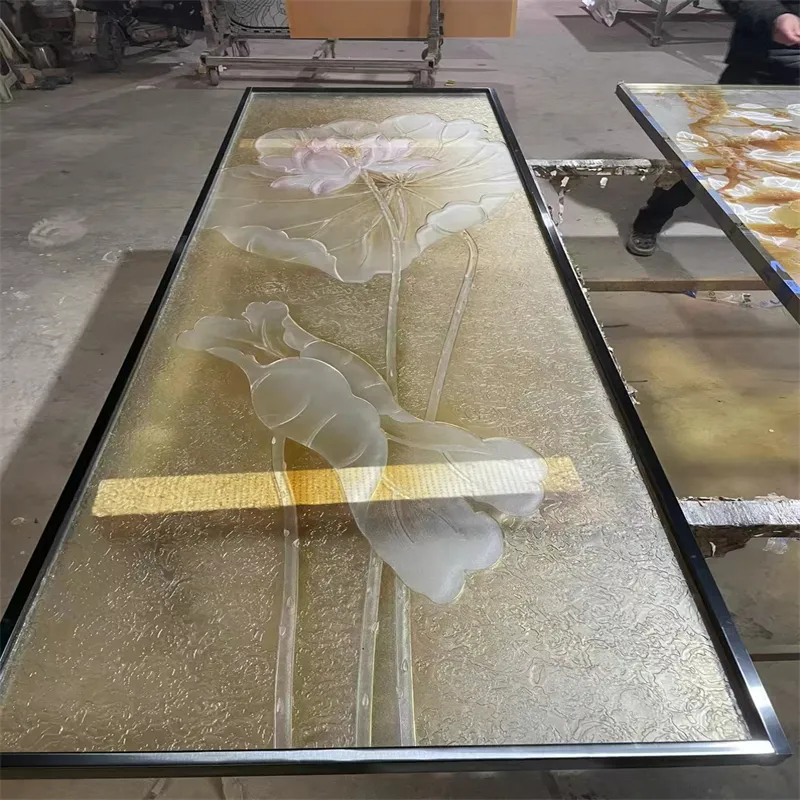Dec . 05, 2024 05:17 Back to list
Understanding the Composition and Benefits of Laminated Glass Materials
What is Laminated Glass Made Of?
Laminated glass is a popular choice for both residential and commercial applications due to its unique properties, combining safety, security, and aesthetic appeal. This type of glass is typically used in windows, doors, and other structural elements, but what exactly is laminated glass made of? Understanding its composition can help us appreciate its benefits and applications.
At its core, laminated glass consists of two or more layers of glass that are bonded together with a durable interlayer. The interlayer is the key component that gives laminated glass its distinctive characteristics, including increased strength and safety. Let’s break down the composition and production process of laminated glass in detail.
1. Layers of Glass
The primary material in laminated glass is, of course, glass itself. The glass layers can vary in thickness and type depending on the intended use. Typically, standard float glass is used, but other variations may include tempered glass or low-emissivity (Low-E) glass, which has special coatings for energy efficiency. The thickness of the glass layers can range from 2mm to 19mm or more, providing versatility for different applications.
2. Interlayer Material
The interlayer is what sets laminated glass apart from traditional glass products. It is usually made of polyvinyl butyral (PVB), ethylene-vinyl acetate (EVA), or polyurethane (PU). Each of these materials has unique properties
- PVB (Polyvinyl Butyral) The most common interlayer, PVB is known for its strong adhesion, transparency, and resistance to moisture. It is manufactured under controlled conditions to ensure excellent optical quality and durability. When glass shatters, PVB holds the shards together, preventing them from scattering and significantly reducing the risk of injury.
- EVA (Ethylene-Vinyl Acetate) Often used in solar applications and architectural designs, EVA has a higher resistance to ultraviolet (UV) light compared to PVB. Its flexibility makes it suitable for curved glass designs and allows for a greater range of colors and thicknesses.
- PU (Polyurethane) This interlayer is known for its enhanced structural properties, providing increased impact resistance and acoustic insulation. PU is particularly useful in applications where sound reduction is essential, such as in busy urban environments.
3. Production Process
The process of creating laminated glass involves several steps that ensure the final product meets safety and performance standards
what is laminated glass made of

- Cutting and Preparation Glass sheets are cut to the desired dimensions, and any necessary coatings or treatments are applied, such as tinting or Low-E coatings.
- Layering The glass sheets are stacked with the interlayer material in between. The PVB sheets are typically pre-cut to match the size of the glass panels.
- Lamination The layered assembly undergoes a process that involves applying heat and pressure (often in an autoclave) to bond the interlayer with the glass. This step is crucial as it eliminates any air bubbles and ensures a strong, permanent bond.
- Cooling and Quality Control After lamination, the glass is cooled gradually. Quality control checks ensure that the laminated glass meets the required specifications for clarity, strength, and adhesion.
4. Benefits of Laminated Glass
Laminated glass offers several benefits beyond its composition
- Safety One of the most significant advantages is its ability to resist breakage. In the event of an impact, the glass may crack, but the fragments will adhere to the interlayer, reducing the risk of injury.
- Sound Insulation The interlayer effectively dampens sound transmission, making laminated glass an excellent choice for noise-sensitive environments.
- UV Protection Laminated glass can block up to 99% of harmful UV rays, protecting interior furnishings and occupants from sun damage.
- Security Laminated glass is harder to break through compared to standard glass, making it a more secure option for vulnerable areas.
In conclusion, laminated glass is a sophisticated construction material composed of layers of glass bonded together with an interlayer, typically made from PVB, EVA, or PU. Its production process and unique properties make it a valuable choice for various applications, providing safety, security, and enhanced performance. As technology advances, the versatility and effectiveness of laminated glass continue to grow, making it an essential material in modern architecture and design.
-
Safety and Style with Premium Laminated Glass Solutions
NewsJun.24,2025
-
Reinvents Security with Premium Wired Glass
NewsJun.24,2025
-
Premium Float Glass Line for Modern Architecture
NewsJun.24,2025
-
Low Emissivity Glass for Energy-Efficient Architecture
NewsJun.24,2025
-
High-Performance Insulated Glass Solutions for Modern Architecture
NewsJun.24,2025
-
Elevates Interior Style with Premium Silver Mirror
NewsJun.24,2025
Related PRODUCTS














